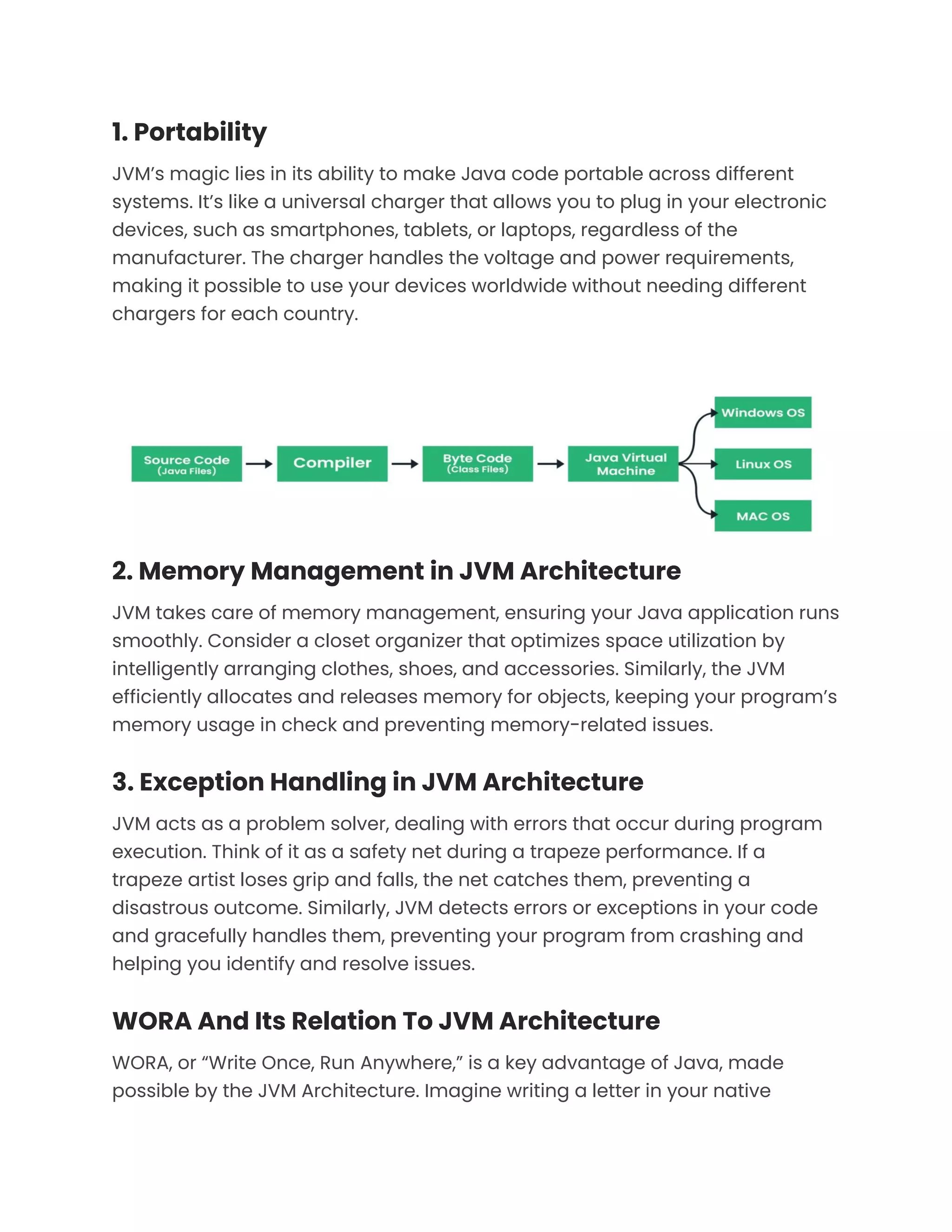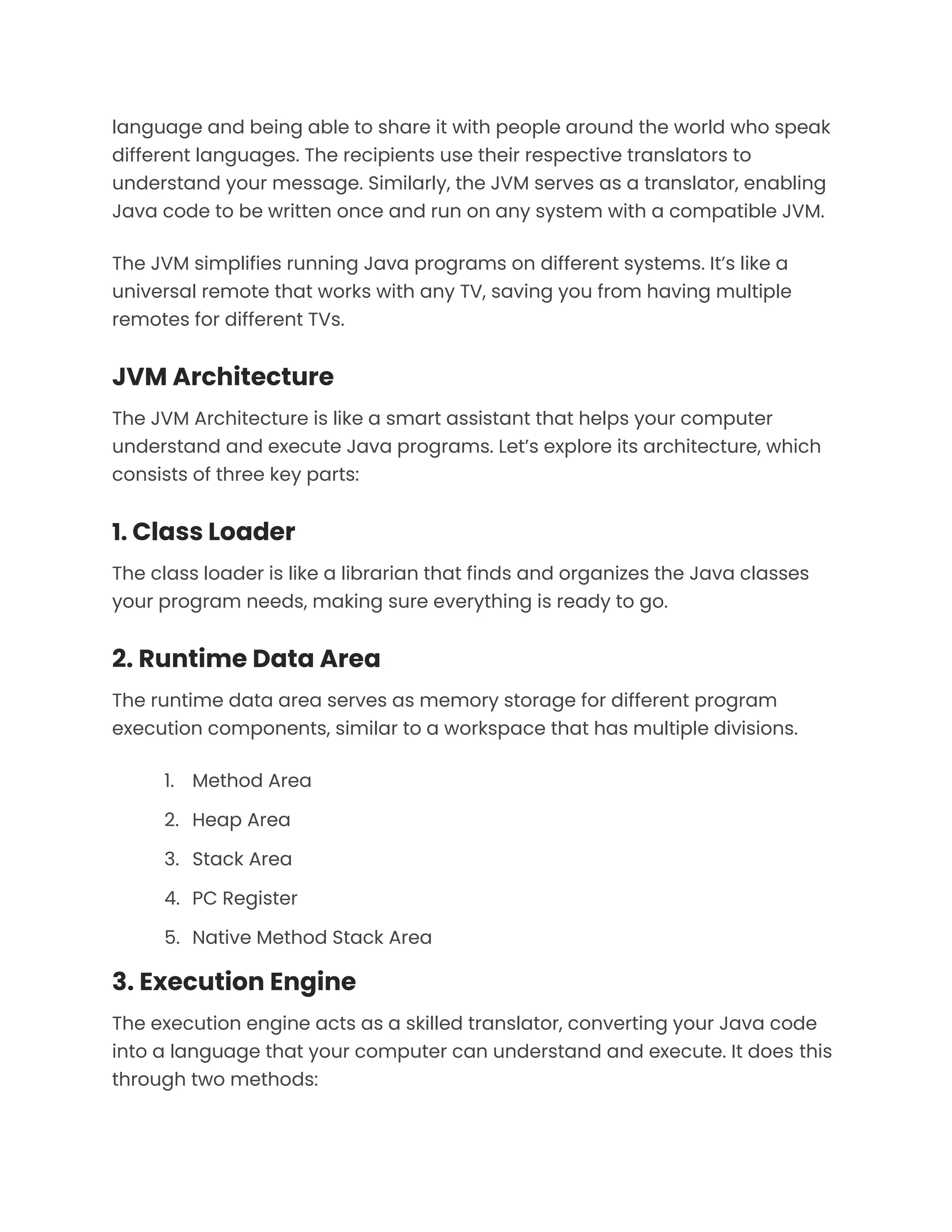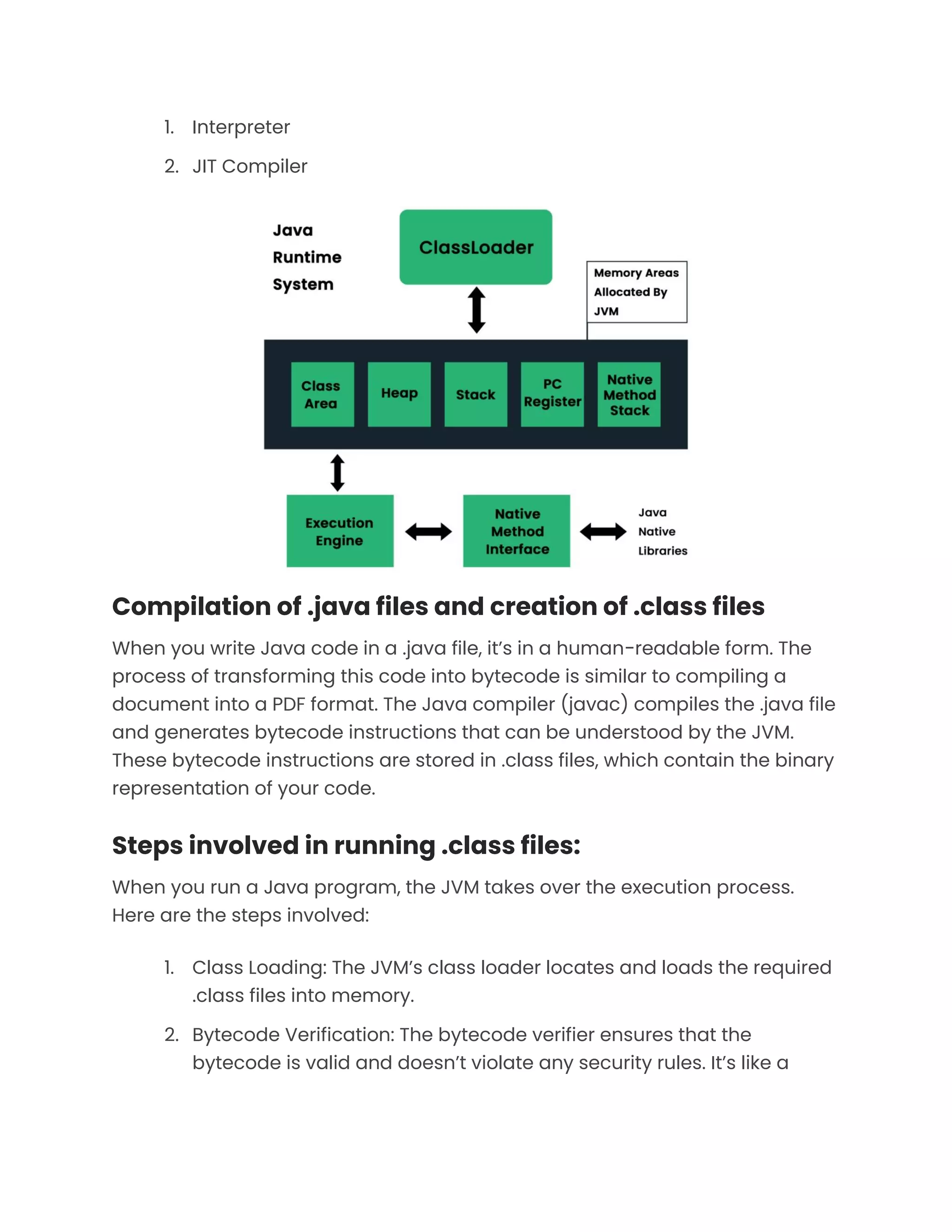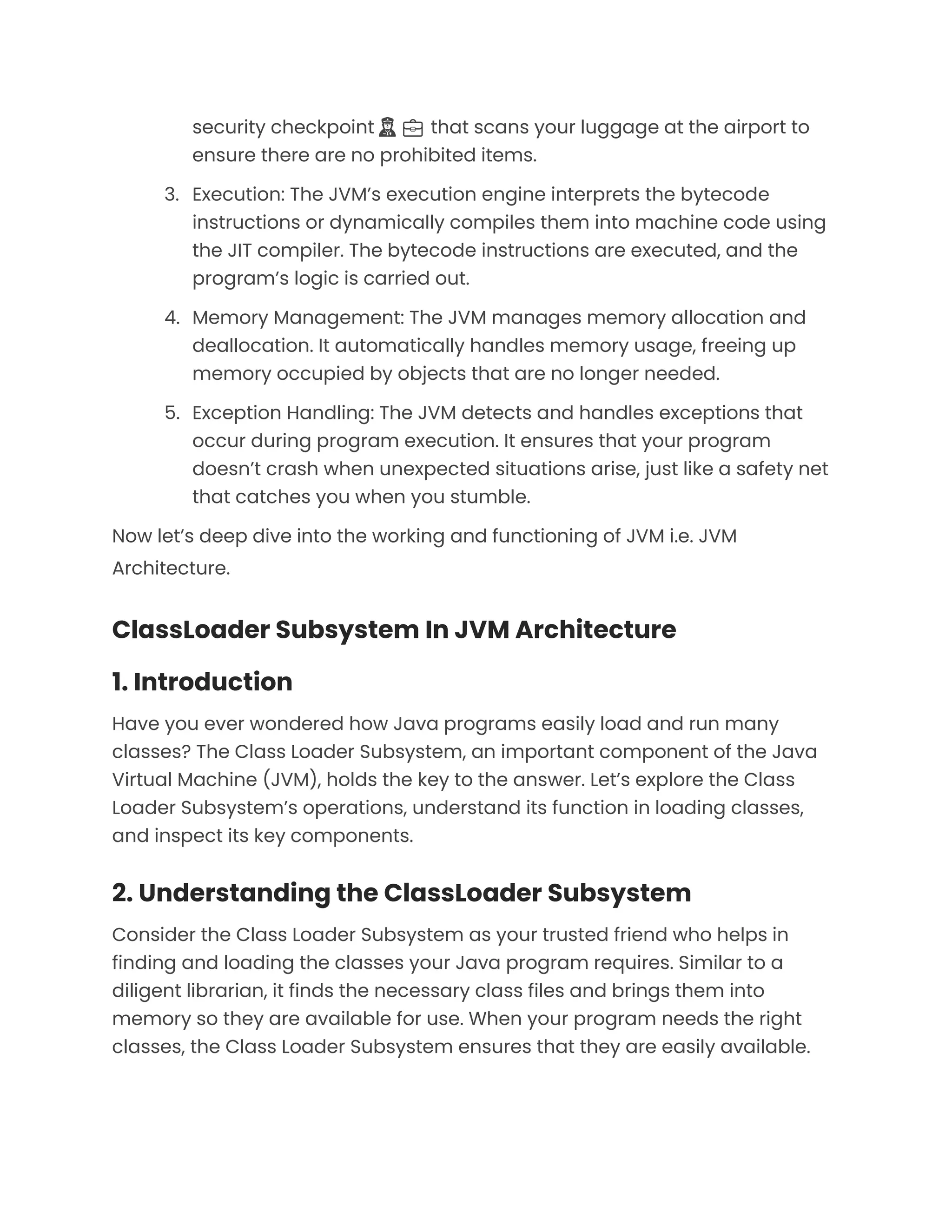The document provides an overview of the Java Virtual Machine (JVM) architecture and its critical role in executing Java programs, enabling the 'write once, run anywhere' (WORA) principle. It explains the JVM's functionalities, including class loading, memory management, and exception handling, drawing analogies to everyday objects for clarity. Additionally, it details the components of the class loader subsystem, emphasizing its importance in loading necessary classes for Java applications.





